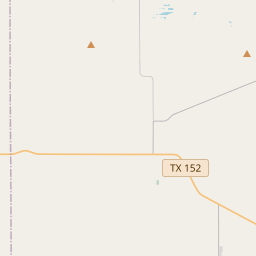Mobeetie Post Office
Historical marker location:






Early mail service in Wheeler County was established at Fort Elliott. In 1879, a U.S. post office opened in the town of Mobeetie, previously known as Sweetwater. George A. Montgomery served as the first postmaster. In 1928, after the town moved one-mile north to this present site on the Santa Fe line, a new post office was built. Rural mail routes were expanded in the 1930s to serve the increasing numbers of farm families, but decreased in later years after drought and harsh conditions led to the abandonment of some farms. (1989)
1775: The Second Continental Congress establishes the Constitutional Post to provide postal services in the thirteen American colonies. Benjamin Franklin is appointed as the first Postmaster General.
1792: The Postal Service Act is passed, officially establishing the United States Postal Service as a federal agency. It sets the foundation for the organization and regulation of postal operations.
1847: The introduction of prepaid adhesive postage stamps revolutionizes mail delivery, simplifying the process and promoting efficiency.
1860: The Pony Express, a fast mail delivery service, is launched to transport mail between the eastern and western regions of the United States. It becomes famous for its daring riders and swift delivery.
1863: Free city delivery is introduced, allowing mail to be delivered directly to urban households and businesses rather than being picked up from local post offices.
1864: The Postal Money Order system is established, providing a secure way for people to send money through the mail.
1896: Rural Free Delivery (RFD) is implemented, bringing mail delivery to rural areas for the first time. This service significantly improves communication and connects rural communities to the rest of the country.
1971: The United States Postal Service is reorganized as an independent agency within the federal government, operating as the USPS. It is no longer directly controlled by the Postmaster General.
1974: The USPS introduces the ZIP (Zone Improvement Plan) Code system, which assigns unique codes to geographic areas to improve mail sorting and delivery efficiency.
1997: The USPS launches its website, usps.com, providing online access to postal services, tracking, and information.
2001: Following the 9/11 terrorist attacks, the USPS faces security challenges and undergoes significant changes to enhance mail screening and protection.
2013: The USPS announces the end of Saturday mail delivery for regular letters and reduces delivery to five days a week.
Present: The USPS continues to be a vital service, handling billions of pieces of mail annually and adapting to changes in technology, communication, and the shipping industry. It plays a crucial role in connecting people, facilitating commerce, and serving as a backbone of the American communication infrastructure.
This timeline provides an overview of key milestones in the history of the USPS, which has played a crucial role in facilitating communication and connecting communities throughout the United States for over two centuries.
As one of the most visible programs of the Texas Historical Commission (THC), historical markers commemorate diverse topics in Texas history, including: the history and architecture of houses, commercial and public buildings, religious congregations, and military sites; events that changed the course of local and state history; and individuals who have made lasting contributions to the state, community organizations, and businesses.
The Texas Rangers, a famous law enforcement agency, were first organized in 1835 to protect settlers from Native American attacks.
The county's formal establishment occurred in 1876, when it was carved out of Bexar County and named after Royal T. Wheeler, a chief justice of the Texas Supreme Court. During the late 19th century, Wheeler County experienced rapid growth as settlers migrated to the area to take advantage of the Homestead Act, which offered land grants to individuals and families. Cattle ranching became a prominent industry, and the county's economy thrived.
In the early 20th century, the discovery of oil in the nearby Panhandle fields brought a new wave of prosperity to Wheeler County. Oil wells were drilled, and the county experienced an economic boom, attracting both workers and investors. However, this period of prosperity was followed by the Great Depression, which led to a decline in economic activity and population.
In recent years, Wheeler County has focused on preserving its historical heritage and natural beauty. The county offers visitors opportunities for outdoor recreation, including hunting, fishing, and camping. Additionally, museums and historical sites in the area showcase the county's fascinating past, allowing residents and visitors to appreciate the rich history of Wheeler County, Texas.
Wheeler County Timeline
This timeline provides a condensed summary of the historical journey of Wheeler County, Texas.
- 1876 - Wheeler County is officially established on August 21, 1876
- 1880 - The town of Mobeetie becomes the first county seat
- 1881 - Wheeler City is founded and becomes the new county seat
- 1886 - The first courthouse in Wheeler City is built
- 1900 - A new brick courthouse is constructed in Wheeler City
- 1930 - The discovery of oil leads to a boom in Wheeler County
- 1950 - A new courthouse is built in Wheeler to accommodate the growing population
- 1960 - The population of Wheeler County reaches its peak at over 10,000 residents
- 1986 - A tornado devastates parts of Wheeler County, causing widespread destruction
- 2000 - The population of Wheeler County decreases to around 5,000 residents
- 2010 - Wheeler County celebrates its 134th anniversary